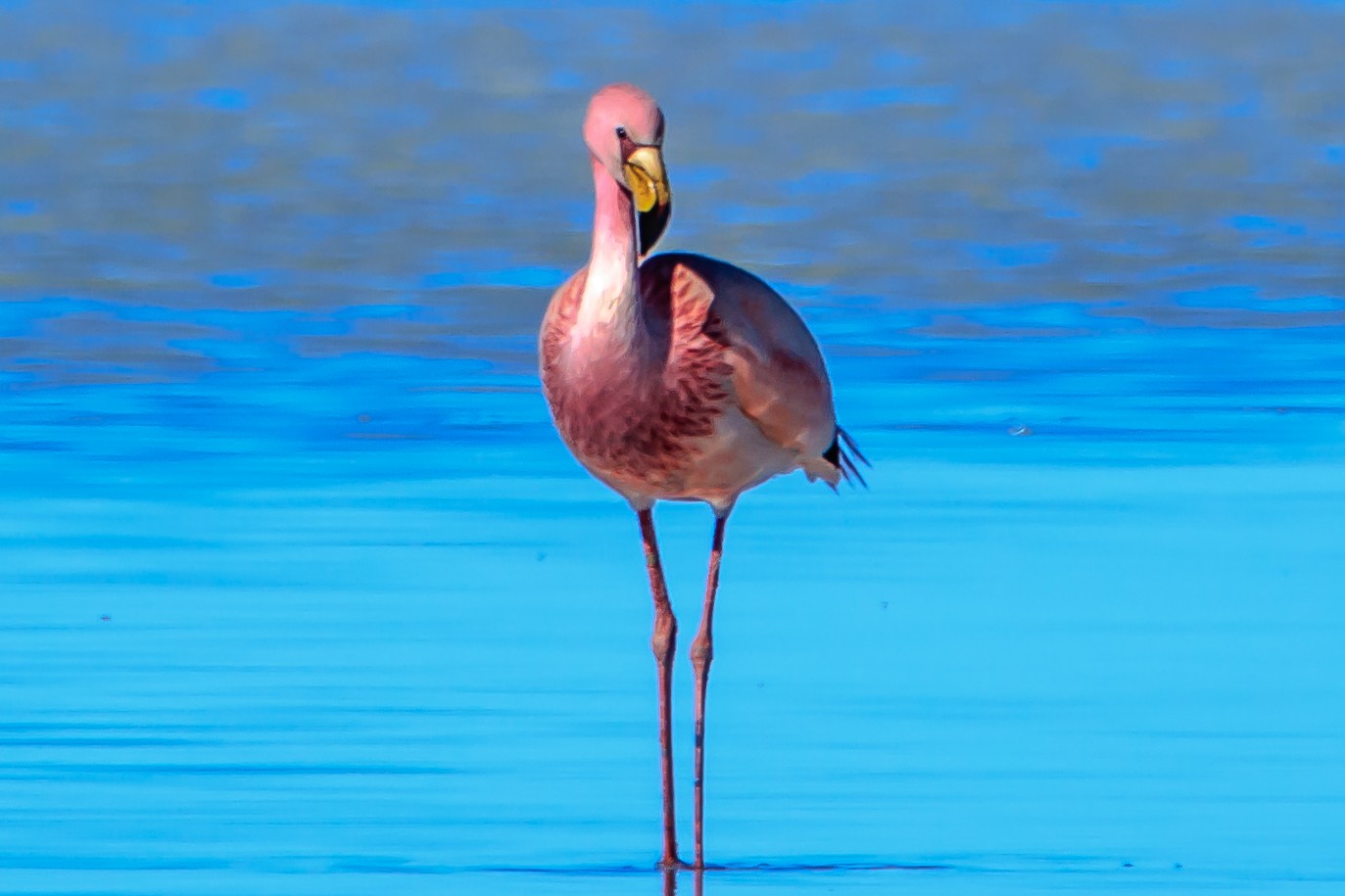James's Flamingo
A species of Flamingo Scientific name : Phoenicoparrus jamesi Genus : Flamingo
James's Flamingo, A species of Flamingo
Botanical name: Phoenicoparrus jamesi
Genus: Flamingo
Content
Description General Info
 Photo By Murray Foubister , used under CC-BY-SA-2.0 /Cropped and compressed from original
Photo By Murray Foubister , used under CC-BY-SA-2.0 /Cropped and compressed from original Description
James's flamingo is smaller than the Andean flamingo, and is about the same size as the Old World species, the lesser flamingo. A specimen of the bird was first collected by Charles Rahmer, who was on a collecting expedition sponsored by Harry Berkeley James, after whom the bird was named. It typically measures about 90–92 cm (2.95–3.02 ft) long and weighs about 2 kg (4.4 lb). James's flamingos have a very long neck made up of 19 long cervical vertebrae, allowing for of movement and rotation of the head. Their long, thin legs also characterize them. The knee is not visible externally, but is located at the top of the leg. The joint at the middle of the leg, which most assume to be the knee joint, is actually the ankle joint. Its plumage is very pale pink, with bright carmine streaks around the neck and on the back. When perched, a small amount of black can be seen in the wings; these are the flight feathers. Bright red skin occurs around the eyes, which are yellow in adults. The legs are brick red and the bill is bright yellow with a black tip. James's flamingo is similar to other South American flamingos, but the Chilean flamingo is pinker, with a longer bill without yellow, and the Andean flamingo is larger with more black in the wings and bill, and yellow legs. The easiest method to distinguish James's flamingos is by the lighter feathers and the bright yellow on the bill. A good method to distinguish Phoenicoparrus from the other species is to look at the feet. In the other three species of flamingos, the feet consist of three forward-facing toes and a hallux. The two species of Phoenicoparrus have the three toes, but do not have a hallux. 
Size
92 cm
Nest Placement
Ground
Feeding Habits
James's Flamingo primarily filters diatoms and algae from shallow Andean lake waters, using a specialized bill with numerous lamellae. Its efficient filter-feeding apparatus is the finest among flamingos, adapted for capturing tiny food particles. These birds exhibit a unique feeding behavior, utilizing their long legs and S-shaped neck to access varying water depths while keeping nostrils above water. They also possess salt glands to excrete excess salt from saline environments.
Habitat
The james's Flamingo primarily resides in the high-altitude salt lakes of the Andean altiplano, favoring environments with shallow, highly alkaline waters. These birds avoid lakes with hardened sediment bottoms and typically breed on soft clay or sandy islands and islets, positioned centrally or along the peripheries of these saline waters.
Dite type
Aquatic invertebrate eater
General Info
Feeding Habits
Bird food type
Species Status
This species was determined to be near threatened by the IUCN in 2008, because the populations of the last three generations of this species have declined. The flamingo has since shown improvements which may be due to a less threatening environment. The greatest threat to the population of this species is human destruction of their habitat. In local culture, stealing the eggs from the nest and sell them was common practice, but since then, measures have been taken to control this. Environmental threats such as heavy rainfall may also have an effect on the breeding of the species. Threats the productivity of the diatoms also threaten the species if enough food is available for them to eat. 